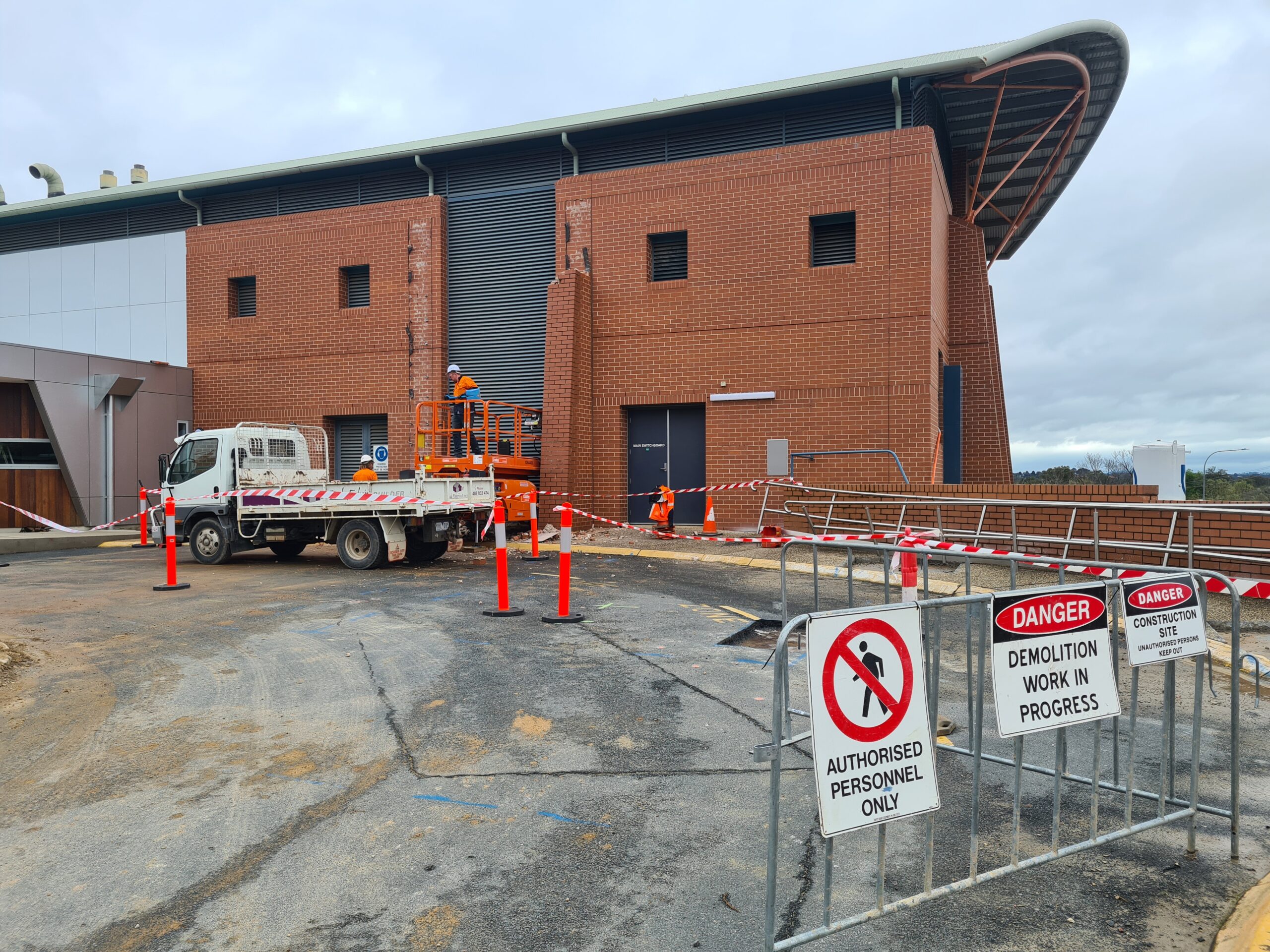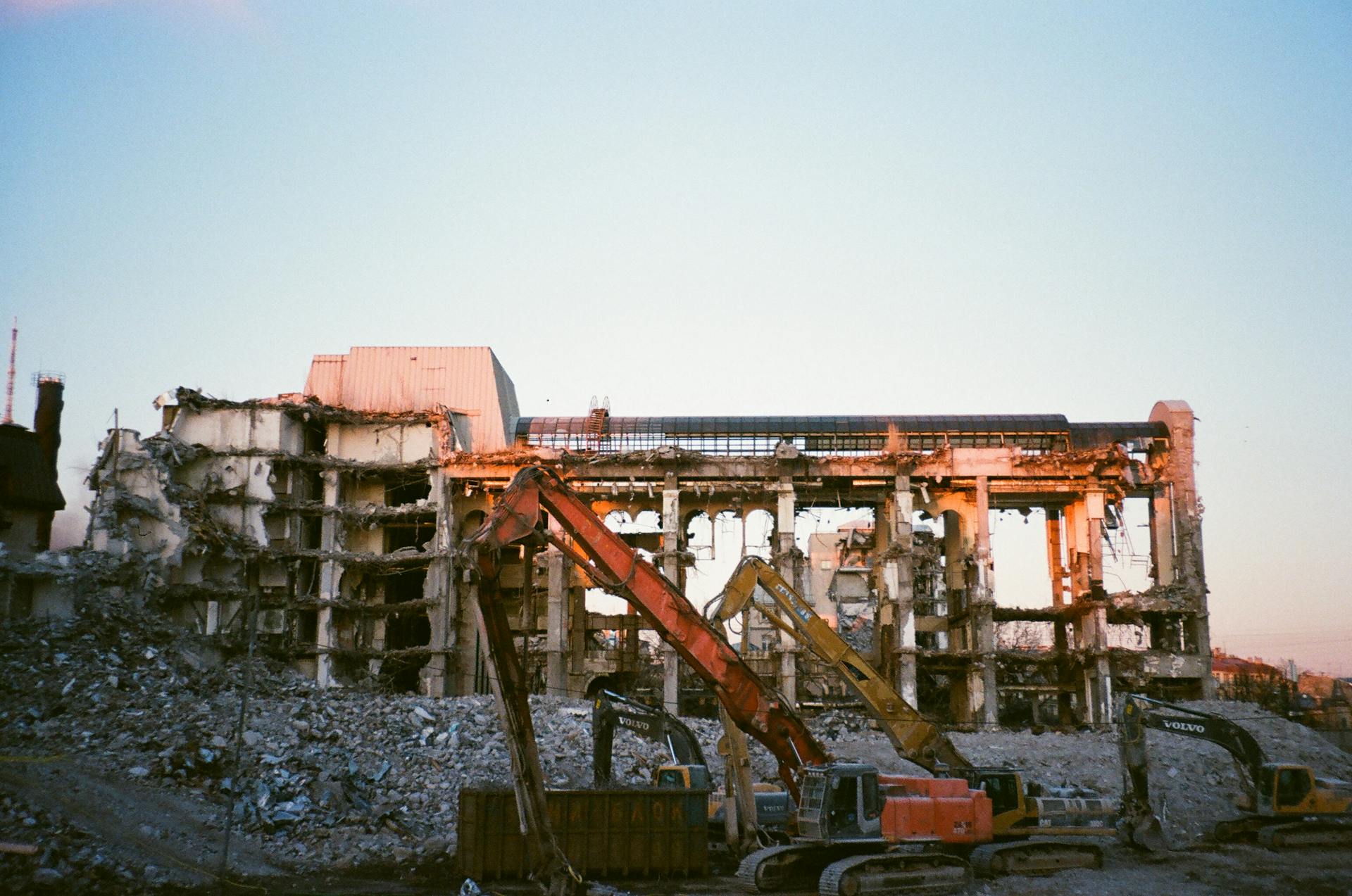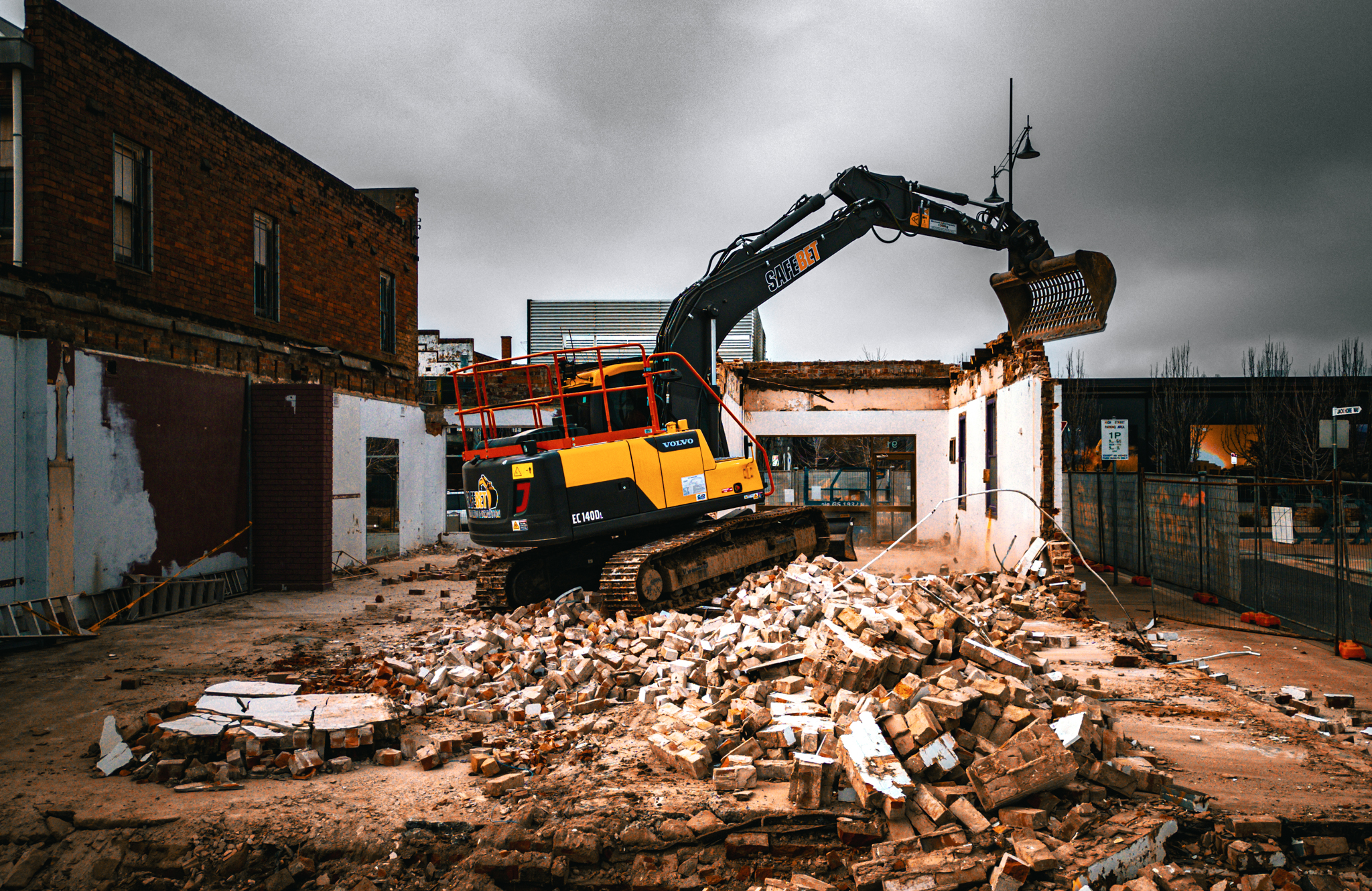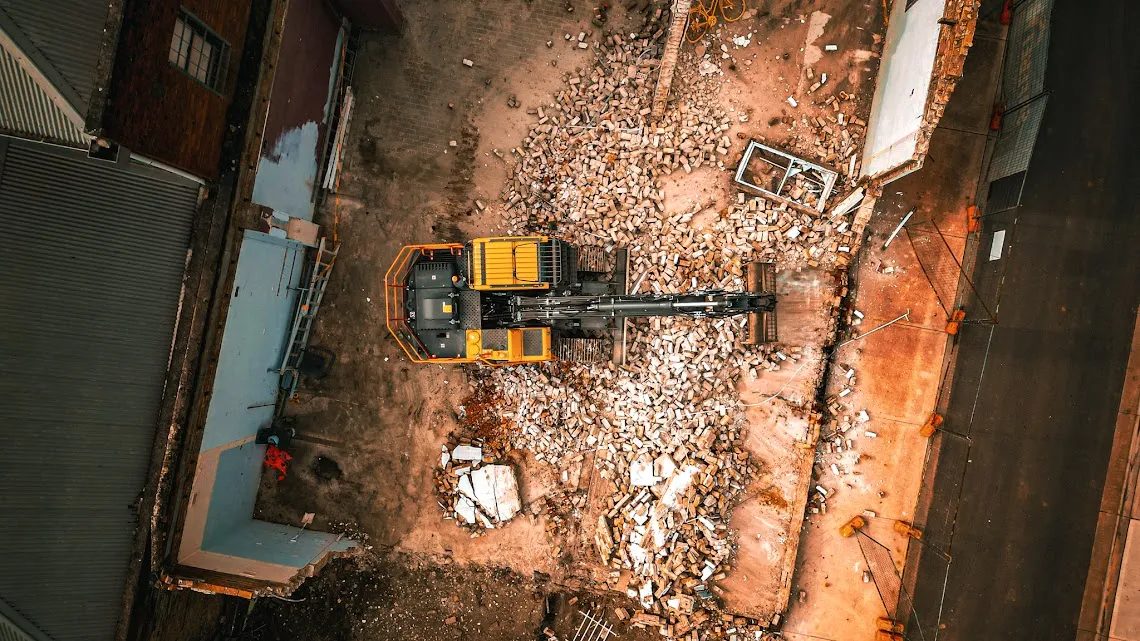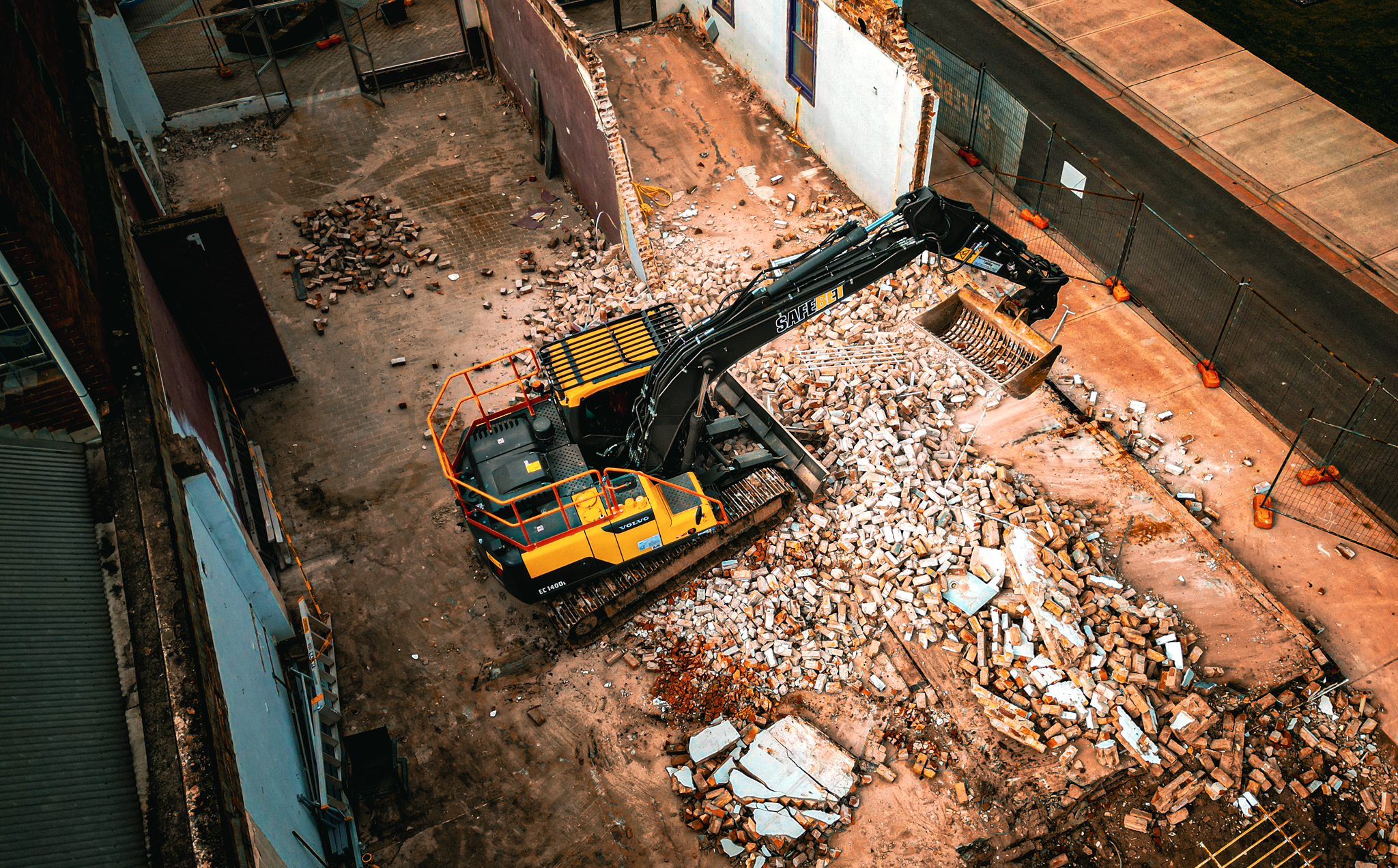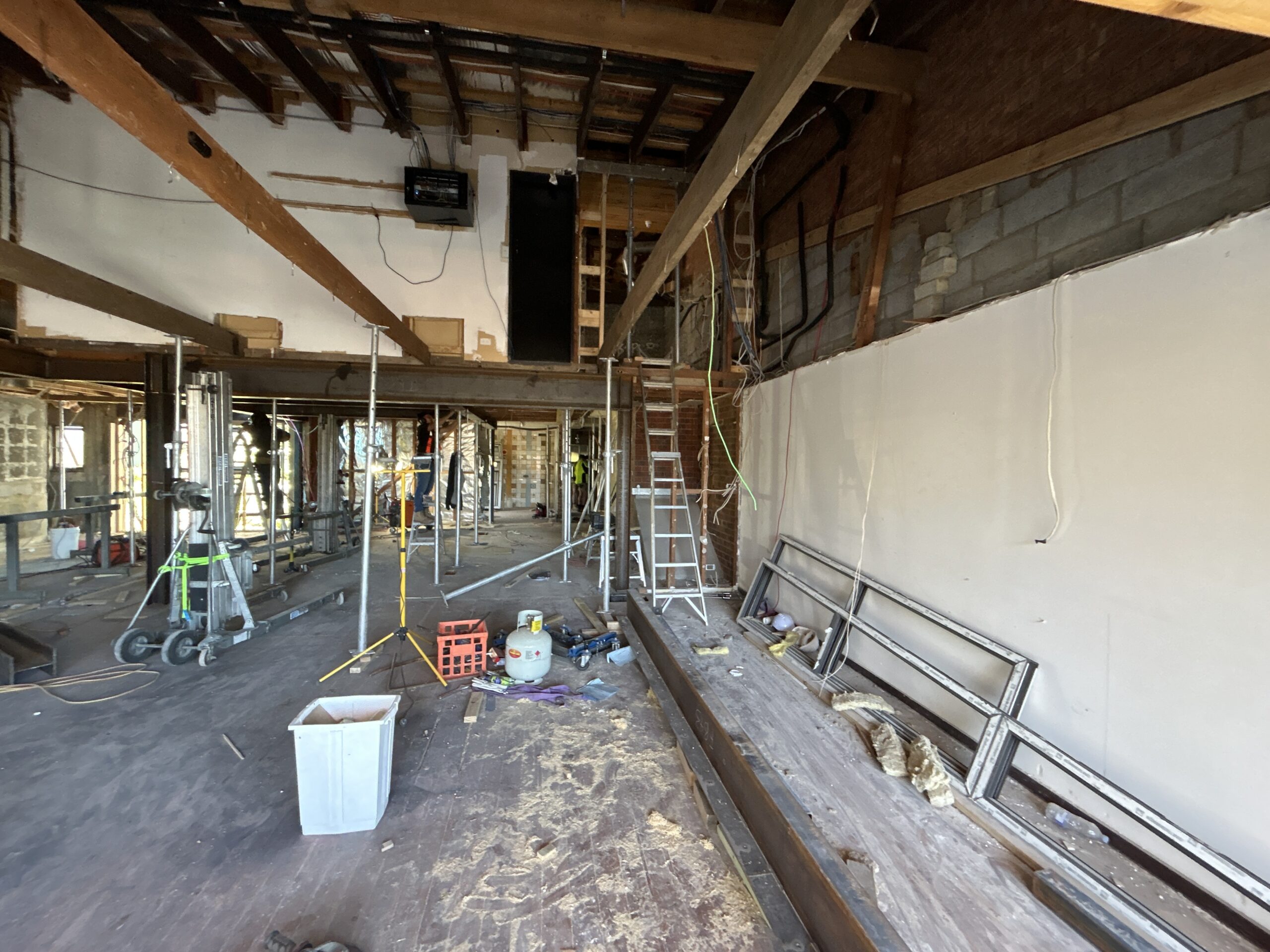At a glance
- Residential vs Commercial: Understand the scale, safety, and complexity differences.
- Safety Precautions: Explore stringent protocols for worker protection.
- Environmental Concerns: Learn about waste management and sustainable practices.
- Techniques and Methods: Discover efficient demolition techniques.
- Partner with Safebet: Trust our expertise for reliable demolition services in Victoria and New South Wales.
Demolition refers to the controlled dismantling or destruction of structures, whether residential or commercial, to make way for new developments, renovations, or safety purposes.
Welcome to our in-depth exploration of residential and commercial demolition, where we delve into the nuances, challenges, and distinctions between these two crucial aspects of the construction and development industry. As experts in demolition services, we at SAFEBET understand the complexities involved in residential and commercial projects, ensuring safety, compliance, and efficiency at every step.
In this blog post, we will dissect residential and commercial demolition, highlighting their definitions, scopes, regulatory landscapes, similarities, differences, techniques, environmental impacts, challenges, and future trends.
What is Residential Demolition?
Residential demolition pertains to the removal of structures such as houses, apartments, or smaller buildings. It often involves single-family homes, duplexes, or townhouses.
Common reasons for residential demolition
- Renovation and remodelling projects
- Unsafe or condemned structures
- Property redevelopment
- Urban revitalisation initiatives
What is Commercial Demolition?
Commercial demolition encompasses the dismantling of larger structures like office buildings, warehouses, retail spaces, and industrial facilities.
Common reasons for commercial demolition
- Scale and complexity of structures
- Specialised equipment and techniques
- Stringent safety protocols for larger projects
Similarities between residential and commercial demolition
Safety Precautions and Regulations
Both residential and commercial demolitions require strict adherence to safety protocols, including hazard assessments, protective gear for workers, and secure site management. Before any demolition work begins, whether it’s a residential structure or a commercial building, a thorough hazard assessment is conducted. This assessment identifies potential risks such as structural instability, hazardous materials, or nearby utilities that could pose a danger during demolition.
Workers involved in residential and commercial demolition projects must wear appropriate personal protective equipment (PPE) such as hard hats, gloves, steel-toed boots, and respiratory protection.
Both types of demolition projects require strict site management practices to control access and ensure the safety of workers, bystanders, and neighbouring properties. Measures such as fencing, signage, and designated entry points help prevent unauthorised access and reduce the likelihood of accidents.
Environmental Concerns
Proper waste management is essential to minimise environmental impact, whether demolishing a residential home or a commercial building. Demolition debris, including concrete, wood, metal, and other materials, must be disposed of responsibly to reduce landfill waste and maximise recycling opportunities.
Both residential and commercial demolition projects can generate a significant amount of recyclable materials. Concrete and masonry can be crushed and reused as aggregate for new construction projects, while metals such as steel and copper can be salvaged and sold to recycling facilities.
Demolition activities can produce dust, noise, and other pollutants that may affect the surrounding environment and community. Implementing pollution prevention measures such as dust suppression techniques, noise barriers, and erosion control measures helps minimise the environmental impact of demolition projects in both residential and commercial settings.
Use of Heavy Machinery and Equipment
Both residential and commercial demolition projects require heavy machinery and equipment to safely and efficiently demolish structures. Excavators are commonly used to tear down walls, while bulldozers can clear debris and level the site. Cranes may be employed to remove heavy structural elements or facilitate the dismantling process. The use of specialised equipment ensures that demolition work is carried out with precision and minimal disruption to surrounding areas.
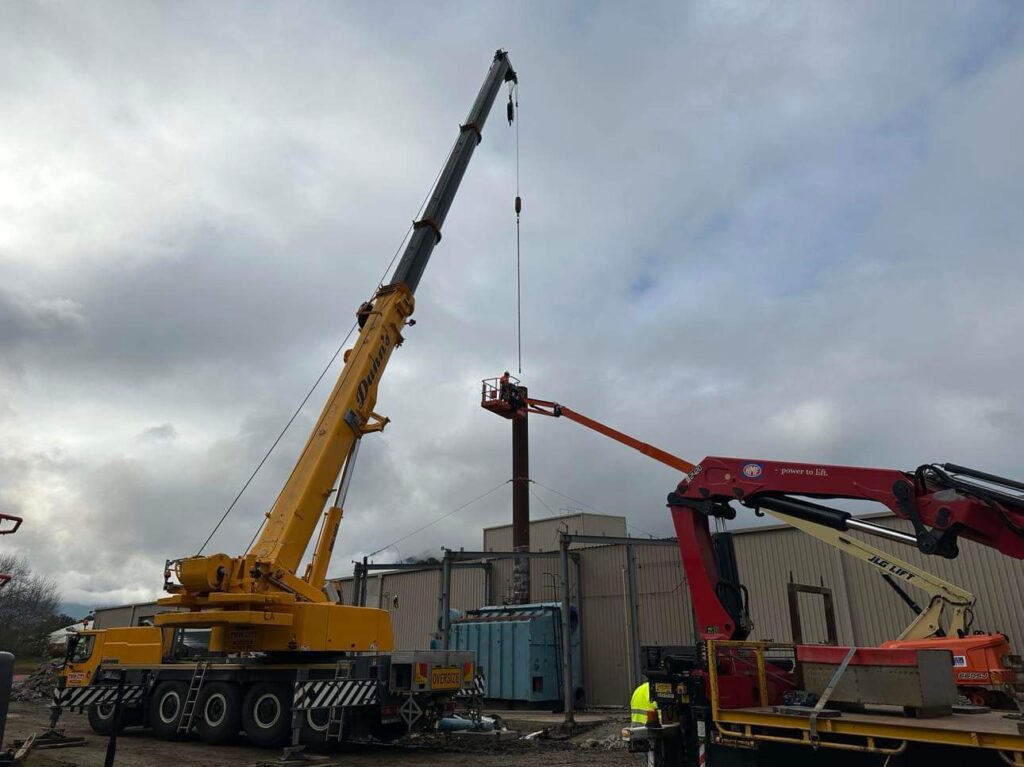
Differences between residential and commercial demolition
Scale and Complexity
Commercial demolitions encompass structures like office buildings, warehouses, or industrial complexes, typically more extensive and intricate than residential properties. These structures often have complex designs, multiple stories, and specialised features like reinforced concrete or steel frameworks. As a result, demolishing commercial buildings requires specialised expertise and equipment capable of handling the increased scale and complexity. Techniques such as controlled demolition or strategic dismantling may be employed to ensure safety and efficiency.
Planning and Permitting Processes
Commercial demolitions involve a more extensive and intricate planning and permitting process than residential projects. Due to the larger scale and complexity of commercial structures, regulatory requirements are more stringent. This includes obtaining permits from local authorities, complying with zoning regulations, and conducting thorough environmental assessments. Additionally, commercial demolitions may require coordination with various stakeholders, such as neighbouring businesses or utilities, adding to the complexity of the planning process.
Cost Factors
Commercial demolitions typically entail higher costs compared to residential projects due to several factors:
Scale: Commercial buildings are often larger than residential properties, resulting in higher demolition costs.
Complexity: The intricate designs and structural elements of commercial structures require specialised demolition techniques and equipment, which can increase costs.
Safety Measures: Commercial demolitions necessitate stringent safety measures to protect workers, bystanders, and nearby properties. This includes using specialised safety equipment, additional training for workers, and comprehensive site safety plans, all contributing to higher costs.
Specialised Equipment: Commercial demolitions often require specialised equipment, such as high-reach excavators or cutting-edge demolition technologies, which incur higher operational and maintenance expenses than standard demolition equipment used in residential projects.
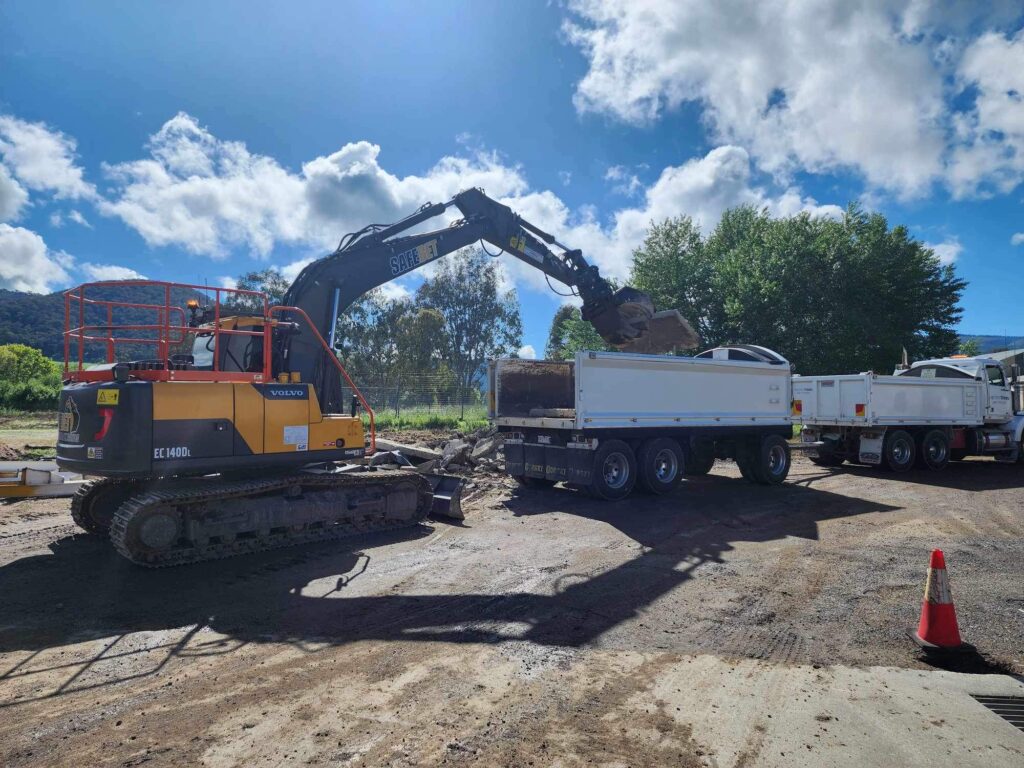
Techniques and methods in residential and commercial demolition
Manual Demolition
Manual demolition represents a meticulous approach to dismantling structures using essential hand tools and skilled labour. This method is favoured for its precision, particularly in scenarios where specific building elements need to be removed without causing damage to surrounding structures. It’s commonly employed in urban areas where space is limited or noise and vibration must be minimised.
Mechanical Demolition
Mechanical demolition involves using heavy machinery such as excavators and bulldozers to swiftly and efficiently down structures. This method is particularly suitable for large-scale projects where speed and productivity are paramount. Mechanical demolition excels in scenarios where manual methods would be impractical or too time-consuming, offering significant advantages in cost-effectiveness and overall project timeline.
Selective Demolition for Salvaging Materials
Selective demolition focuses on carefully dismantling structures to recover valuable materials for reuse or recycling. This method involves identifying and separating wood, metal, and architectural elements that can be salvaged and repurposed. Selective demolition is integral to sustainable construction practices, as it reduces the amount of waste sent to landfills and minimises the need for new resources.
Sustainable Demolition Practices Using Green Technologies
Sustainable demolition practices leverage green technologies to minimise environmental impact and enhance resource efficiency. This includes using low-emission machinery, implementing dust suppression systems, and utilising alternative energy sources such as solar or electric-powered equipment. By reducing carbon emissions, conserving resources, and mitigating air and noise pollution, these practices contribute to a more sustainable construction industry.
In conclusion, residential and commercial demolition are crucial aspects of the construction industry, involving the controlled dismantling of structures for various purposes. While they share similarities, such as safety precautions and environmental concerns, they differ in scale, complexity, and cost.
Commercial demolitions entail larger structures and more intricate planning processes, leading to higher costs. Both sectors employ manual and mechanical demolition techniques, selective salvaging and sustainable practices. Looking ahead, innovation and sustainability will shape the future of demolition, ensuring safety, efficiency, and environmental responsibility in construction practices.
For those in Victoria and New South Wales seeking reliable demolition services, SAFEBET stands ready to assist. With our expertise in both residential and commercial demolition, we guarantee safety, compliance, and efficiency every step of the way. Whether you’re embarking on a renovation project, revitalising urban areas, or needing specialised commercial demolition, SAFEBET is your trusted partner.
Contact us today to learn more about our comprehensive demolition solutions and experience the difference of working with a team committed to excellence in Victoria and New South Wales.
